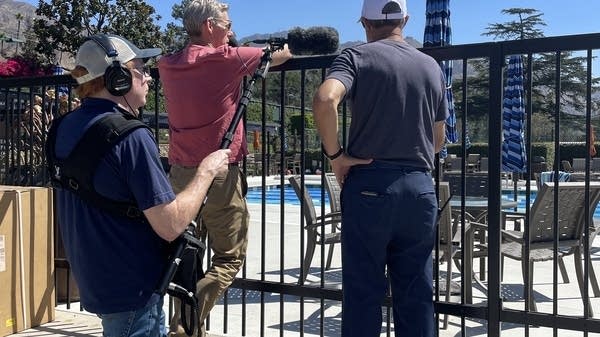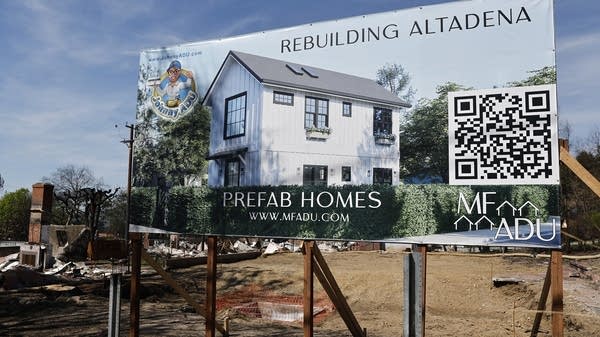Proposed California law would help wildfire victims avoid sales to financial predators
The Community Stabilization Act is winding its way through committees in the California legislature.

Soon after the firestorms in Southern California this year, some folks got calls, texts and visits — not from venture capitalists but what many considered “vulture capitalists.”
“Predatory investors, more outside financial interests start offering folks cents on the dollar for their houses at a time when a lot of people are desperate,” said California State Representative John Harabedian, a Democrat who represents Altadena.
Altadena was the center of one of the fires, a town where more than 9,000 homes and businesses were lost. My across-the-street neighbor in Altadena, a retiree named Sandra, said she got creepy low-ball offers, which she ignored.
The California governor initially banned unsolicited offers like this, but that moratorium ran out in April. Now, Assemblyman Harabedian has introduced a state bill to deal with this.
“It is incumbent on us to figure out, how do we get them a humane exit at fair market value so they get every dollar and every cent that they’re owed for their house — at a time that ‘fair market value’ is very questionable,“ he said.
Back to the two words Harabedian used earlier: “predatory” and “outside.” Below-market offers are the predatory part. The word “outside” refers to outside financial interests coming in to buy property — buyers who might not take into account local values and local needs, possibly altering the unique character of these places. The hope is a proposed investment vehicle could address both.
“This is an innovative financial model to finance these transactions at a zero cost to the state,” said Harabedian. “This would not cost the state any money.”
So if not state taxpayers, then where’s the money coming from? The answer is a 1977 federal law that leans on banks to lend to help disadvantaged communities. The idea is for California to create an investment using what’s called the Community Reinvestment Act money from banks, which would flow to investors who then used the money to buy burned property for normal and not fire-sale sale prices.
Who gets to use that money? Under this plan, not just anybody. The eligible investors would be nonprofit organizations and — here’s the key part — organizations with roots in the community.
“These will be entities and organizations and individuals that live and work in the community, and they won’t be outside investors that are just looking to make an extra dollar off of a disaster,” Harabedian said.
It’s an idea with support from a big philanthropy, the California Community Foundation. Miguel Santana, the foundation’s president and CEO, said these nonprofit investors could choose to develop the burned land in a way that addresses the housing affordability crisis.
“For example, making the property available for first-time homeowners who are looking to buy or for people who have been displaced in the community,” he said.
After a nonprofit builds on the property or finds a buyer it likes, it would sell and use the proceeds to pay back the bank for its capital and the state for running the program. The nonprofit would also keep some of the money for its trouble.
“There is an ability to align mission to the selling of the opportunity itself,” Santana said.
This is all a bet that land values will return once all the debris, toxic soot and general disruption gets cleared — which is a decent bet given the persistently tight real estate market in Southern California.
In fact, more than four months after the fire, real estate people tell me the law of supply and demand has already boosted sale prices for burned land, at least for the medium-sized to smaller flat parcels.
“There just aren’t very many to be had, certainly in LA county,” said Teresa Fuller, a real estate agent who specializes in selling the burned lots of Altadena.
“I really want to see people in Altadena who have experienced so much loss, who want and need to move on — I want to see everyone get the most,” she said.
The Community Stabilization Act is still winding its way through committees in the California legislature.













